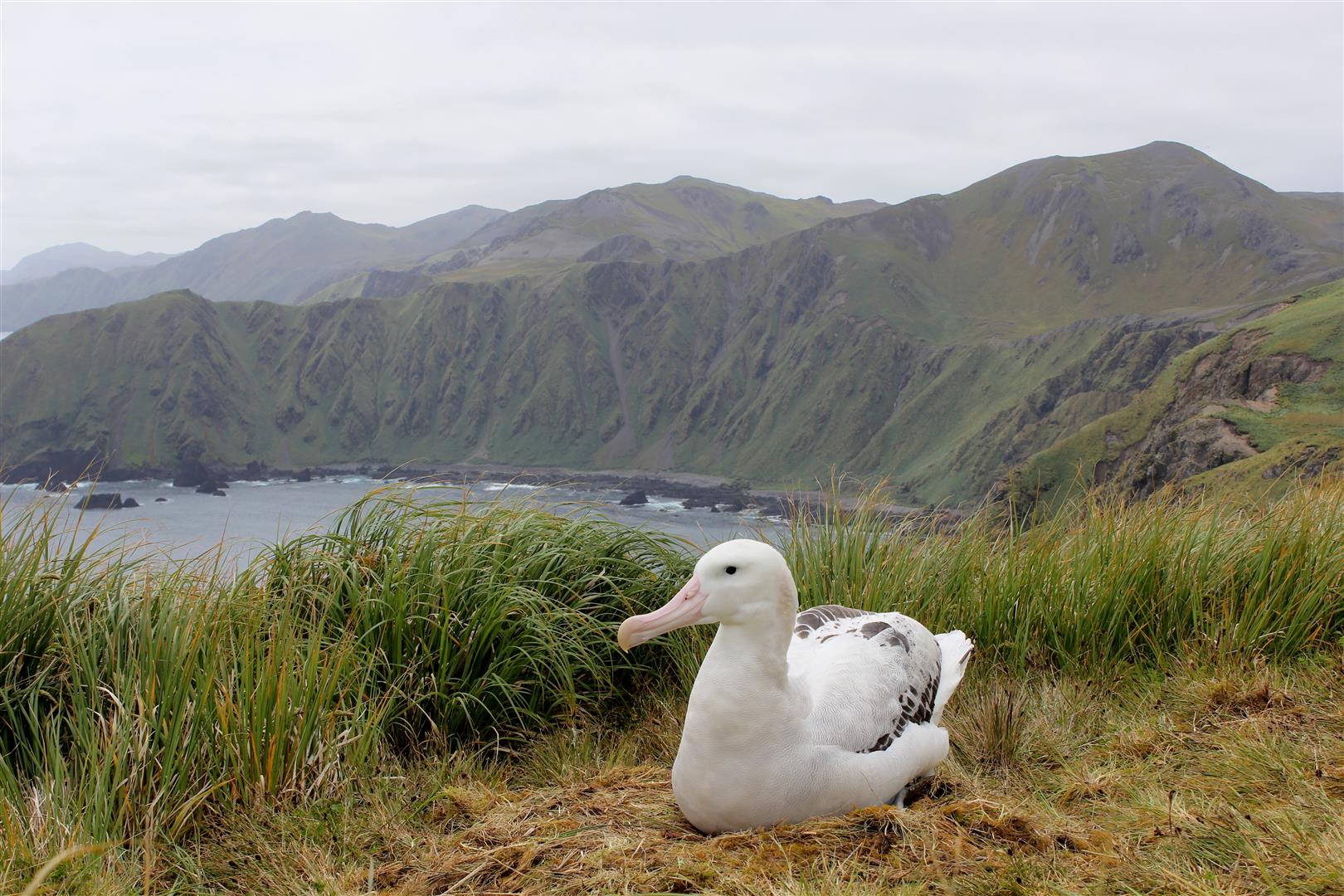 Wandering Albatrosses breed on sub-Antarctic islands between 46° and 56°S. The pictured Wandering Albatross is on Australia's sub-Antarctic Macquarie Island; photograph by Melanie Wells.
Wandering Albatrosses breed on sub-Antarctic islands between 46° and 56°S. The pictured Wandering Albatross is on Australia's sub-Antarctic Macquarie Island; photograph by Melanie Wells.
Emilia Rota (Department of Physics, Earth and Environmental Sciences, University of Siena, Italy) and colleagues have published open access in the journal, Environments, a review of plastic contaminants in the Antarctic environment, noting data gaps and areas for future research. The full paper, "Macro- and Microplastics in the Antarctic Environment: Ongoing Assessment and Perspectives" can be found here.
The paper’s abstract follows:
The number of scientists and tourists visiting Antarctica is on the rise and, despite the management framework for environmental protection, some coastal areas, particularly in the Antarctic Peninsula region, are affected by plastic contamination. The few data available on the occurrence of microplastics (<5 mm) are difficult to compare, due to the different methodologies used in monitoring studies. However, indications are emerging to guide future research and to implement environmental protocols. In the surface and subsurface waters of the Southern Ocean, plastic debris >300 µm appears to be scarce and far less abundant than paint chips released from research vessels. Yet, near some coastal scientific stations, the fragmentation and degradation of larger plastic items, as well as microbeads and microfibers released into wastewater from personal care products and laundry, could potentially affect marine organisms. Some studies indicate that, through long-range atmospheric transport, plastic fibers produced on other continents can be deposited in Antarctica. Drifting plastic debris can also cross the Polar Front, with the potential to carry alien fouling organisms into the Southern Ocean. Sea ice dynamics appear to favor the uptake of microplastics by ice algae and Antarctic krill, the key species in the Antarctic marine food web. Euphausia superba apparently has the ability to fragment and expel ingested plastic particles at the nanoscale. However, most Antarctic organisms are endemic species, with unique ecophysiological adaptations to extreme environmental conditions and are likely highly sensitive to cumulative stresses caused by climate change, microplastics and other anthropogenic disturbances. Although there is limited evidence to date that micro- and nanoplastics have direct biological effects, our review aims at raising awareness of the problem and, in order to assess the real potential impact of microplastics in Antarctica, underlines the urgency to fill the methodological gaps for their detection in all environmental matrices, and to equip scientific stations and ships with adequate wastewater treatment plants to reduce the release of microfibers.
Reference:
Rota, Emilia, Elisa Bergami, Ilaria Corsi and Roberto Bargagli. 2022. Macro- and Microplastics in the Antarctic Environment: Ongoing Assessment and Perspectives. Environments 9, no. 7: 93. https://doi.org/10.3390/environments9070093
Posted 2 September 2022

 English
English  Français
Français  Español
Español